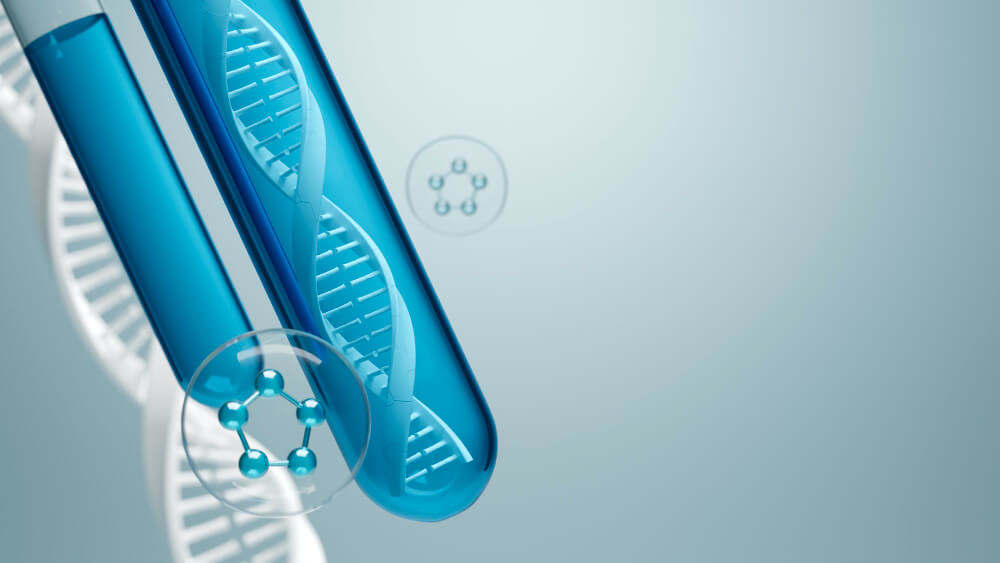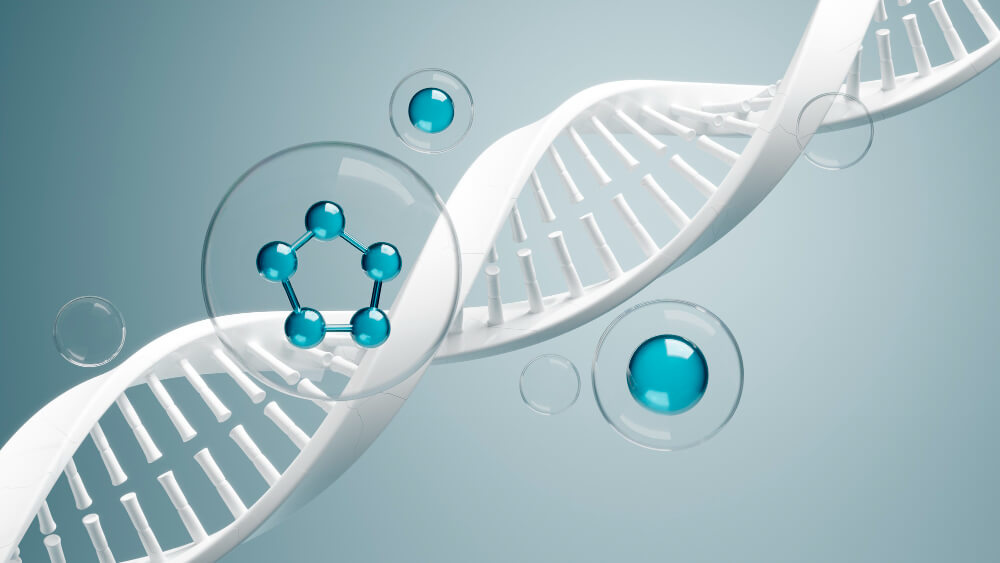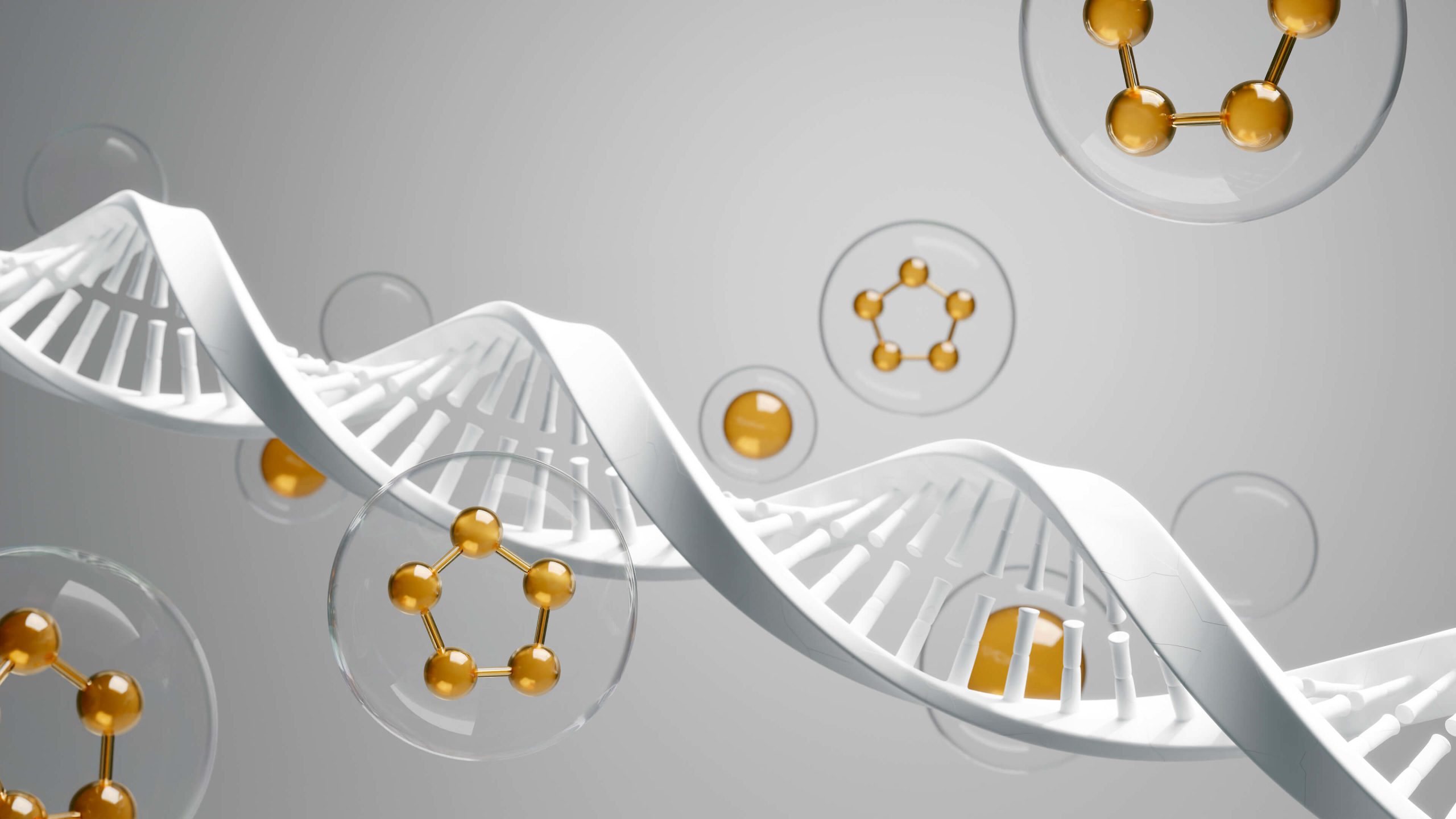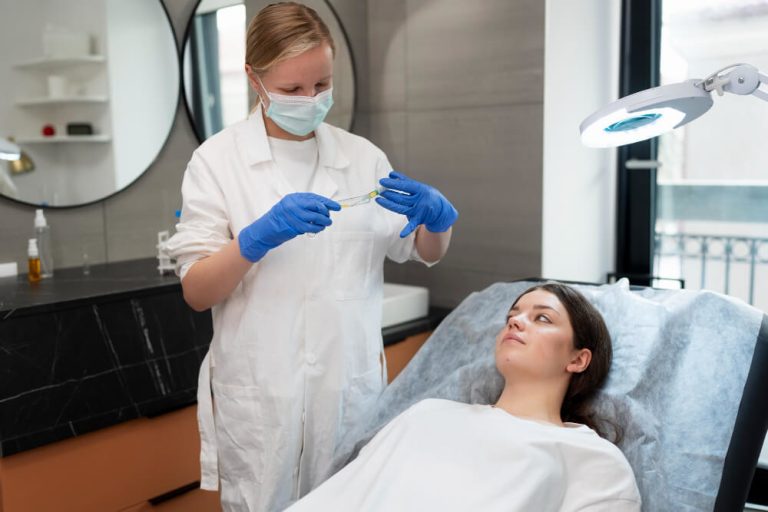Beyond Anti-Aging: Your Guide to the Science of Longevity Medicine
For centuries, humanity has been captivated by the idea of extending life. We’ve searched for fountains of youth and miracle cures, all in the hope of gaining more time. But a modern scientific revolution is reframing this ancient quest. It asks a more profound question: what if we could not only add years to our life, but more importantly, add life to our years?
This is the core promise of a groundbreaking field that is reshaping our approach to health and wellness. It’s a proactive, data-driven discipline that focuses on optimizing health to extend the period of our lives spent in good health, a concept known as healthspan. This exciting frontier is Longevity Medicine, a practice that moves beyond simply treating disease and instead aims to prevent it, pushing the boundaries of human potential.
Unlike traditional medicine, which often acts reactively to diagnose and manage illness, longevity medicine operates on the principle of prevention. It seeks to understand the underlying mechanisms of aging itself and intervene in those processes. The goal is to maintain youthful function, vitality, and resilience for as long as possible, compressing the period of late-life morbidity into a much shorter timeframe. This is about feeling vibrant and capable in your 80s, not just reaching them.

What Makes Longevity Medicine Different from Conventional Healthcare?
Imagine your health as a journey in a car. Conventional medicine is like an excellent mechanic who fixes your car after it breaks down on the side of the road. They are experts at repairing damage, replacing parts, and getting you moving again. This model is essential and has saved countless lives. When you have an acute infection or a broken bone, this reactive approach is precisely what you need.
Longevity medicine, however, is the expert engineering and maintenance team that works on your car before the journey even begins. They analyze the engine’s design, use the highest quality fuel, perform regular diagnostics to predict component failure, and provide you with a driving manual tailored to your specific model. The goal is to prevent the breakdown from ever happening in the first place.
This proactive stance is the fundamental differentiator. It shifts the focus from disease-span, the period of life spent sick, to healthspan, the period of life spent in optimal health. It uses advanced diagnostics to identify risks and subtle imbalances long before they manifest as full-blown chronic diseases like diabetes, heart disease, or neurodegeneration. It’s about being ahead of the curve, not just responding to it.
Furthermore, longevity medicine is deeply personal. It rejects the one-size-fits-all approach. While conventional medicine often relies on population-wide statistics and guidelines, longevity medicine dives deep into your individual biology. It uses your unique genetic makeup, your specific biomarkers, and your lifestyle data to create a health strategy that is yours and yours alone. This is precision healthcare at its most sophisticated, designed to optimize your unique biology for a longer, healthier life.

What Are the Fundamental Pillars of a Longevity Strategy?
A comprehensive longevity strategy is not built on a single magic pill or secret therapy. Instead, it rests on a foundation of interconnected lifestyle pillars that work synergistically to support cellular health, reduce inflammation, and promote resilience. Mastering these fundamentals is the first and most crucial step on any longevity journey. They are the daily practices that empower you to take control of your aging process.
These pillars are not new concepts, but longevity science has provided a deeper understanding of why they are so profoundly effective. It has illuminated the biological mechanisms through which these simple habits influence everything from our genes to our metabolic function. By consistently engaging with these pillars, we can create an internal environment that resists age-related decline.

How Does Nutrition Impact Our Lifespan?
For decades, we’ve been told to eat well to manage our weight and avoid heart disease. Longevity medicine takes this advice to a much deeper, cellular level. The food you eat is not just fuel; it is information that communicates directly with your genes and cellular machinery. A longevity-focused diet is designed to minimize inflammation, support metabolic flexibility, and activate cellular repair pathways.
Key concepts include prioritizing nutrient density, which means choosing foods rich in vitamins, minerals, and phytonutrients. This often involves a diet centered on plants, lean proteins, and healthy fats. Another strategy is time-restricted eating or intermittent fasting, which gives your digestive system a rest and can trigger a cellular cleanup process called autophagy. This process allows your cells to clear out damaged components, essentially recycling and renewing themselves from within. The focus shifts from simply counting calories to optimizing the quality and timing of your nutritional intake to promote cellular rejuvenation.

Why is Exercise Non-Negotiable for Healthy Aging?
Exercise is perhaps the most potent longevity ‘drug’ available to us, and its benefits extend far beyond building muscle or burning calories. Regular physical activity is a powerful signal to your body to stay young and functional. It directly impacts several of the key hallmarks of aging. For instance, it stimulates the growth of new mitochondria, the tiny power plants inside our cells, which tend to decline in function as we age. More efficient mitochondria mean more energy and better cellular health.
A well-rounded exercise regimen for longevity includes four key types of activity. First is stability and mobility work to maintain balance and prevent falls. Second is strength training to preserve muscle mass, which is crucial for metabolic health and physical independence. Third is aerobic exercise, or cardio, to support cardiovascular function and brain health. Finally, exercising in zone 2, a low-intensity state where you can still hold a conversation, is particularly effective at improving mitochondrial efficiency. This comprehensive approach ensures you are building a resilient and capable body for the long haul.

Can Better Sleep Really Help You Live Longer?
Sleep is not a passive state of rest; it is a critical period of intense biological activity and restoration. While you sleep, your body is hard at work repairing tissues, consolidating memories, and flushing toxins from the brain. The glymphatic system, the brain’s unique waste-clearance pathway, is most active during deep sleep, helping to remove metabolic byproducts that can accumulate and contribute to neurodegenerative diseases.
Chronic sleep deprivation disrupts these essential processes. It elevates stress hormones like cortisol, impairs immune function, and promotes inflammation, all of which accelerate the aging process. Prioritizing seven to nine hours of high-quality sleep per night is a non-negotiable aspect of longevity. This means practicing good sleep hygiene: maintaining a consistent sleep schedule, creating a dark and cool environment, and avoiding screens before bed. Quality sleep is a powerful lever for enhancing cognitive function, hormonal balance, and overall resilience.

What Role Does Stress Management Play?
In our fast-paced modern world, chronic stress has become a baseline state for many. While short-term stress is a normal and even helpful part of life, persistent stress wreaks havoc on our biology. It keeps the body in a constant ‘fight or flight’ mode, leading to chronically elevated levels of cortisol. This hormonal state can drive inflammation, suppress the immune system, increase blood pressure, and disrupt metabolic health.
Effectively managing stress is therefore a critical longevity skill. Practices like mindfulness, meditation, deep breathing exercises, and spending time in nature can help activate the parasympathetic nervous system, also known as the ‘rest and digest’ state. This counterbalance to the stress response helps lower inflammation and allows the body to focus on repair and regeneration. Building psychological resilience and learning to manage our response to life’s stressors is just as important as managing our physical health.

What Advanced Tools Does Longevity Medicine Use?
While the foundational pillars of lifestyle are essential, longevity medicine also employs a suite of advanced scientific tools and therapies to create its highly personalized strategies. These technologies allow practitioners to look ‘under the hood’ of your biology, moving beyond standard blood tests to gain a much more granular understanding of your health status and future risks. This is where the field truly becomes precision medicine, tailored to your unique biological landscape.
These tools are not about finding a single cure for aging. Instead, they provide detailed data that informs targeted interventions. They help answer critical questions about how fast you are aging, what your specific genetic vulnerabilities are, and which therapies might be most effective for you. This data-driven approach allows for a proactive and highly strategic plan to optimize healthspan.

How Do We Measure Biological Age?
We all know our chronological age, the number of years since we were born. But in longevity medicine, a more important metric is biological age, which reflects how old your cells and tissues are on a functional level. Two people can have the same chronological age but vastly different biological ages based on their genetics, lifestyle, and environmental exposures.
Measuring biological age is now possible through sophisticated tests that analyze a variety of biomarkers. The most advanced of these are epigenetic clocks. Epigenetics refers to modifications to our DNA that act like switches, turning genes on or off without changing the DNA sequence itself. As we age, the patterns of these switches, specifically a process called DNA methylation, change in predictable ways. By analyzing these patterns, scientists can calculate a highly accurate biological age and even predict the pace of aging. This provides a powerful baseline and allows you to track the effectiveness of your longevity interventions over time.

How is Genetic Information Used to Personalize Care?
Your genome is your body’s unique instruction manual. While you cannot change your genes, you can influence how they are expressed. Understanding your genetic predispositions is a cornerstone of personalized longevity medicine. It allows for the creation of a proactive health plan that plays to your genetic strengths and mitigates your inherent weaknesses.
For example, genetic testing can reveal if you have variants that affect how you metabolize certain nutrients, your risk for cardiovascular disease, or your likelihood of developing Alzheimer’s. This knowledge is power. It allows practitioners to recommend highly specific dietary changes, targeted supplements, or increased screening for certain conditions. The process of integrating genomics into preventative patient care transforms healthcare from a generalized practice into a bespoke strategy designed exclusively for your biology.

What Are Senolytics and How Do They Work?
One of the key discoveries in aging research is the concept of cellular senescence. As cells are damaged or reach the end of their life, they are supposed to self-destruct. However, some of these cells enter a zombie-like state where they resist death but stop functioning properly. These senescent cells accumulate in our tissues as we age and secrete a cocktail of inflammatory proteins that damage surrounding healthy cells, contributing to many age-related diseases.
Senolytics are a class of compounds that are being researched for their ability to selectively target and eliminate these senescent cells. By clearing out this cellular debris, senolytics may help reduce inflammation and restore a more youthful tissue environment. While still an emerging area of research, the potential therapeutic benefits are immense. Early studies are exploring the clinical applications of senolytics for conditions ranging from osteoarthritis to fibrosis, representing a promising new frontier in regenerative medicine.

Is Hormone Replacement Therapy a Part of Longevity?
Hormones are powerful chemical messengers that regulate nearly every process in the body, from metabolism and energy levels to mood and libido. As we age, the production of key hormones like estrogen, testosterone, and DHEA naturally declines. This decline can contribute to many of the symptoms we associate with aging, such as loss of muscle mass, decreased bone density, brain fog, and reduced vitality.
Hormone replacement therapy, or HRT, aims to restore these hormones to more youthful levels, potentially alleviating these symptoms and improving quality of life. In a longevity context, HRT is not about chasing a number but about optimizing function and well-being. It is a nuanced and highly individualized therapy that requires careful consideration of risks and benefits. When undertaken with an expert practitioner, strict adherence to evidence-based guidelines and robust safety protocols and risk management in HRT is paramount to ensure the therapy is both effective and safe.

Who is Leading the Research in Aging?
The rapid advancements in longevity medicine are not happening in a vacuum. They are the result of decades of dedicated work by scientists and institutions around the world. This global effort involves government agencies, private research institutes, and professional organizations, all working to unravel the complex mysteries of the aging process.
This collaborative ecosystem is crucial for translating basic scientific discoveries into practical clinical applications that can benefit the public. The research conducted by these leading bodies provides the evidence base upon which longevity practitioners build their strategies. Their work separates science from science fiction, ensuring that interventions are grounded in rigorous data.
In the United States, a primary driver of this research is the National Institute on Aging, a part of the National Institutes of Health. The NIA funds a vast portfolio of research into the biology of aging, age-related diseases like Alzheimer’s, and the social and behavioral aspects of growing older. Their work provides a foundational understanding that fuels innovation across the entire field.
Alongside government efforts, independent, non-profit organizations are making incredible strides. A world-renowned leader in this space is the Buck Institute for Research on Aging. The Buck Institute’s sole mission is to end the threat of age-related disease for this and future generations. Their scientists are at the forefront of identifying the fundamental mechanisms of aging and developing interventions to slow them down.
As the science evolves, professional organizations play a vital role in educating clinicians and establishing standards of care. Groups like the American Academy of Anti-Aging Medicine (A4M) work to bridge the gap between research and practice. They provide resources that help define what is anti-aging medicine and ensure that practitioners are equipped with the latest knowledge to help their patients navigate this complex and exciting field.

Why is Healthy Aging a Global Priority?
The pursuit of longevity is more than just an individual goal; it has become a global imperative. For the first time in history, most people can expect to live into their 60s and beyond. This demographic shift presents both incredible opportunities and significant challenges for societies worldwide.
An aging population places increasing demands on healthcare systems, social services, and economies. If those extra years of life are spent in poor health, the societal burden can become immense. This reality has prompted global health leaders to focus not just on lifespan, but on healthspan on a massive scale.
Recognizing this critical need, the World Health Organization has launched a major global collaboration. This initiative, known as the Decade of Healthy Ageing (2021-2030), aims to foster longer and healthier lives for everyone. It calls for concerted action to create age-friendly environments, combat ageism, and deliver integrated, person-centered care. This global movement underscores that the principles of longevity medicine are essential for building a sustainable and thriving future for all generations.

How Can You Start Your Own Longevity Journey?
Embarking on a longevity journey can feel overwhelming given the amount of information available. The most important thing to remember is that it starts with small, consistent steps. You don’t need to implement every advanced therapy overnight. The first and most powerful actions are within your immediate control.
Begin with the pillars. Assess your current habits in nutrition, exercise, sleep, and stress management. Pick one area to focus on and make a small, sustainable change. Maybe it’s adding a 20-minute walk to your daily routine or committing to a consistent bedtime. These foundational habits create the biological resilience upon which all other interventions are built.
As you progress, consider seeking guidance from a healthcare professional who is well-versed in functional or longevity medicine. They can help you move beyond the basics and explore the personalized diagnostic tools and therapies that can further optimize your health. The journey to a longer healthspan is a marathon, not a sprint. It’s about cultivating a mindset of proactive, lifelong health management.
Longevity medicine represents a paradigm shift in how we view aging. It transforms it from a passive process of inevitable decline into an opportunity for empowerment. It provides us with the knowledge and tools to actively influence our own biology, aiming for a future where our later years are defined by vitality, purpose, and health.
Frequently Asked Questions

What are the key differences in billing for a standard preventative visit versus a more comprehensive longevity medicine consultation?
The primary difference lies in the coding structure and payer recognition. Standard preventative visits, such as an Annual Wellness Visit (AWV), utilize specific CPT and HCPCS codes (e.g., G0438, G0439) that are widely covered by Medicare and commercial insurance for basic screenings and risk factor counseling. These visits have well-defined components and are billed as a specific, bundled preventative service.
In contrast, longevity medicine consultations are often more complex and time-intensive, delving into advanced diagnostics and personalized health optimization plans. These are typically billed using time-based Evaluation and Management (E/M) codes (e.g., 99205, 99215), which require meticulous documentation of the total time spent and the complexity of medical decision-making. Because many longevity services are not yet standard of care, they may not be covered, necessitating a different billing approach.

How can our practice handle billing for longevity services that insurance payers often deem "not medically necessary"?
The most effective strategy is to implement a transparent hybrid or direct-pay model for these specific services. Practices should clearly delineate between covered preventative care and non-covered longevity services, communicating this distinction and the associated costs to the patient upfront. For Medicare beneficiaries, it is mandatory to use an Advance Beneficiary Notice of Noncoverage (ABN) to officially inform them of their financial liability before providing a service that is not expected to be covered.
This proactive financial approach minimizes claim denials and protects the practice’s revenue stream from unpredictable insurance reimbursements. Establishing a clear fee schedule for cash-based services like advanced biomarker panels or in-depth consultations builds patient trust by preventing surprise bills. It also properly sets expectations, positioning longevity medicine as a valuable, proactive investment in a patient’s long-term health.

What are some common coding pitfalls to avoid when submitting claims for preventative and longevity services?
A frequent pitfall is insufficient documentation to support the level of service billed, especially for time-based E/M codes used in lengthy longevity consults. Another common error is incorrectly billing for a preventative visit and a problem-oriented visit on the same day without using the appropriate modifier, such as modifier 25, which can lead to denials. Furthermore, linking non-specific or inappropriate ICD-10 diagnosis codes that fail to establish medical necessity for any covered tests is a primary reason for claim rejection.
To mitigate these risks, providers must meticulously document the total time spent on the encounter and the specific topics discussed to justify time-based billing. Practices should ensure their staff is trained on the correct use of modifiers and the importance of linking the most specific diagnosis code to each service. Implementing an internal pre-claim audit process can help catch these errors before submission, significantly improving the clean claim rate and reducing administrative burdens.
Discover the most comprehensive functional medicine training, longevity training, and biohacking certification programs designed specifically for healthcare professionals, medics, and clinic owners who want to master regenerative medicine protocols and anti-aging therapies.







